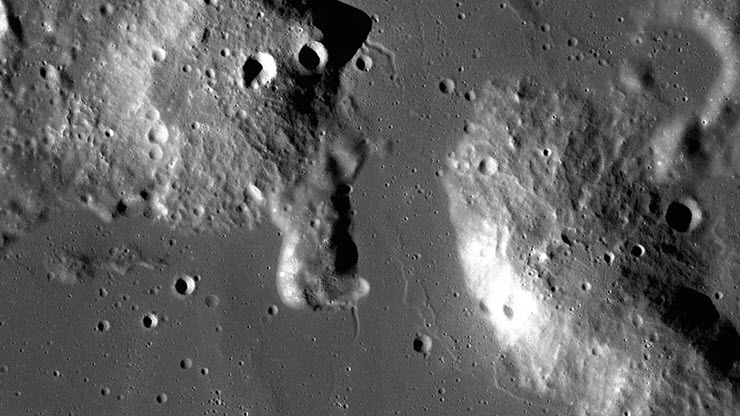NASA plans to continue to explore the mystery of the Moon-Information Technology
Many mysteries surrounding the Moon are still unsolved, and NASA is planning to solve this problem in the next decade.
Follow CNETOver the next decade, NASA is determined to reimagine Apollo-era energy by returning space exploration to the moon. The agency already has a schedule of ambitious missions, collectively known as the Artemis plan, poised to culminate in the realization of things only found in science fiction like ground stations, vehicles and vehicles. , power supply and even “Lunanet”.
On June 2, NASA announced information about an interesting lunar project with the theme: Solving the puzzle of the Gruithuisen Domes.
It started with telescopes on Earth that showed scientists that there are several dome-shaped structures on the moon that are different from the surrounding terrain. After years of observations, many have concluded that the structure – dubbed Gruithuisen Domes – must be made of a type of magma, or molten rock that is typically volcanically active, rich in silica and similar to composition of granite.
NASA wants to solve the mystery of the dome-shaped Gruithuisen Domes.
But what is confusing here is that silica volcanoes on Earth are usually formed by 2 components: water and tectonic plates. But neither of them are on the moon. Therefore, it remains a mystery that how the Gruithuisen Domes could form.
So, in parallel with the Artemis missions, NASA is ready to “dissect” the strange mysteries of the moon with a new scientific instrument called the Lunar Vulkan Imaging and Spectroscopy Explorer, or Lunar-VISE.
Technically, Lunar-VISE is a combination of 5 individual components, 2 of which will be mounted on the lunar lander and 3 will be attached to a mobile detector. Lunar-VISE will analyze the layers of dust and rock that lie at the top of the Gruithuisen Domes domes.
NASA believes this will help decipher what the domes’ true composition is and hopes that the rest of the Gruithuisen story will unfold. In the scheme of things, this could inform future Artemis missions that will be able to send astronauts or robots to the moon more easily, since once the terrain is well understood, landing with any Any kind of object will benefit.
In addition, along with Lunar-VISE, NASA also revealed details of another fascinating science mission for Artemis. The agency plans to send a yeast to the surface of the moon using a set of scientific instruments called the Lunar Explorer Instrument for space biology applications, or LEIA. It will then wait and see what happens when the creature is exposed to microgravity and space radiation.
The mission is promising because the yeast that NASA is about to send into space, called Saccharomyces cerevisiae, is an important model of human biology, especially in the areas of genetics, process, and genetics. cellular and molecular replication and division, and the response of DNA damage to factors in the radiation environment. In other words, the information obtained from the Artemis yeast experiment could one day aid biological studies on Earth as well as shed light on exactly how the space environment affects the human body.
This has proven to be an important topic lately, as commercial and scientific-engined spaceflight continues to evolve – suggesting we’re in the second iteration, in fact. of the Apollo period.
According to Bach Ngan (Vietnamese people)
at Blogtuan.info – Source: 24h.com.vn – Read the original article here




